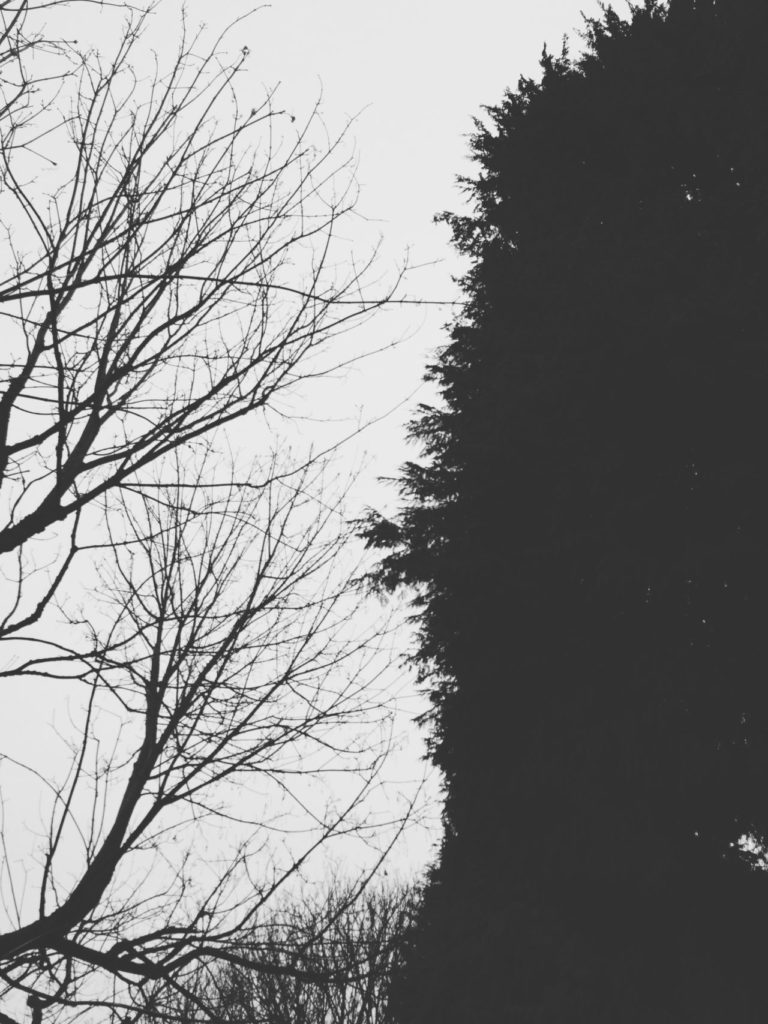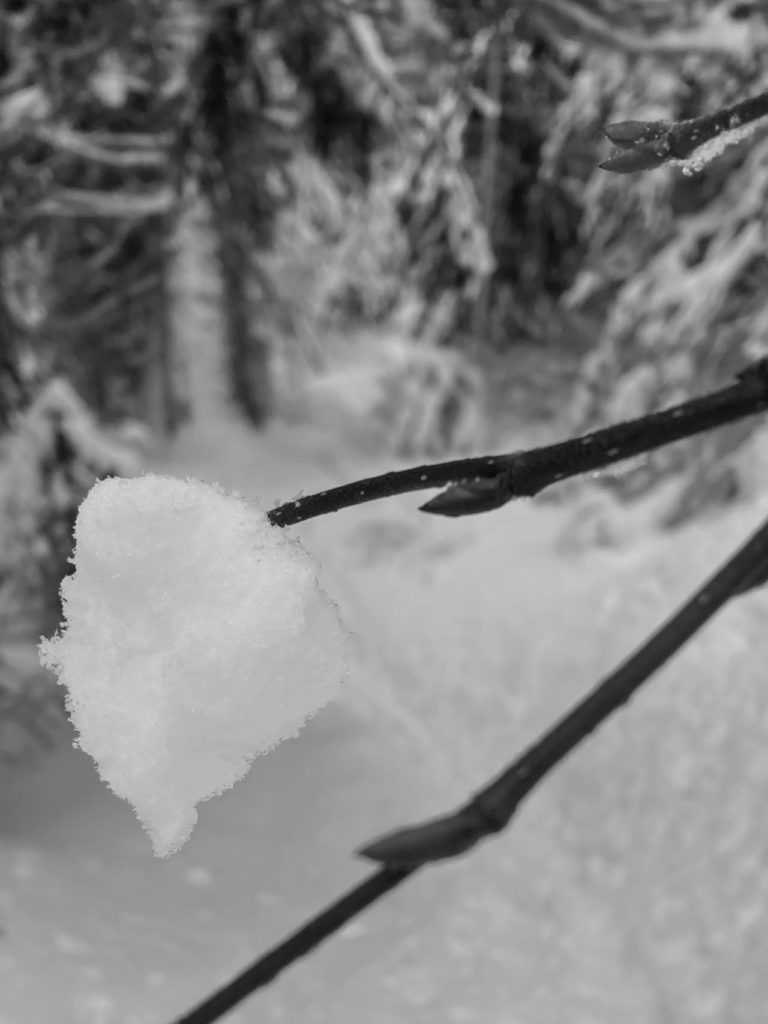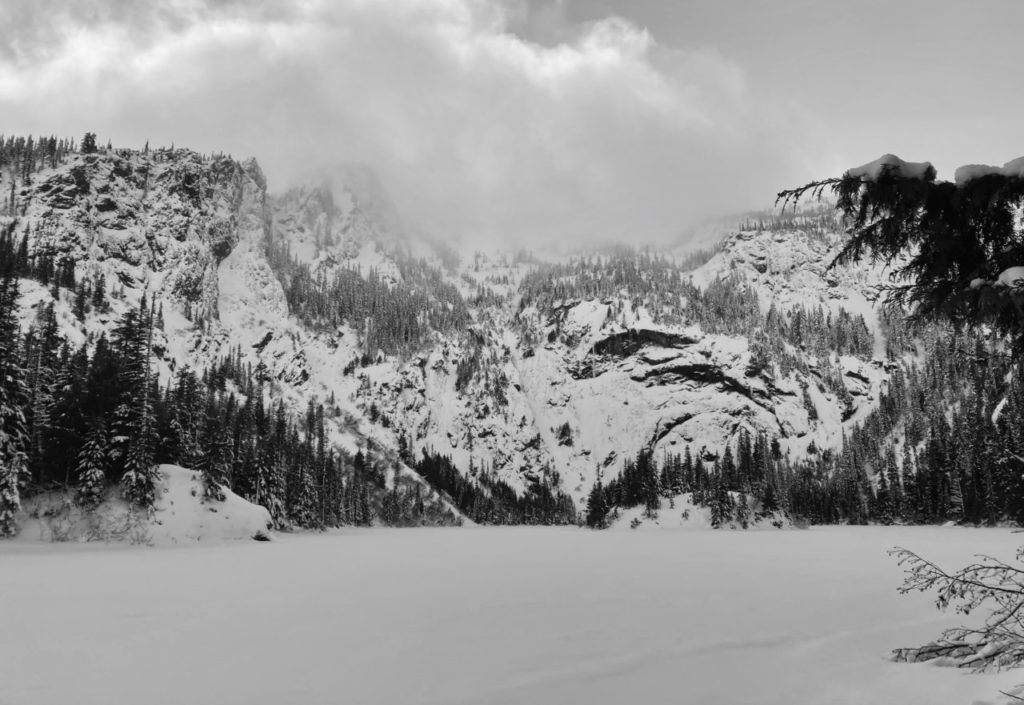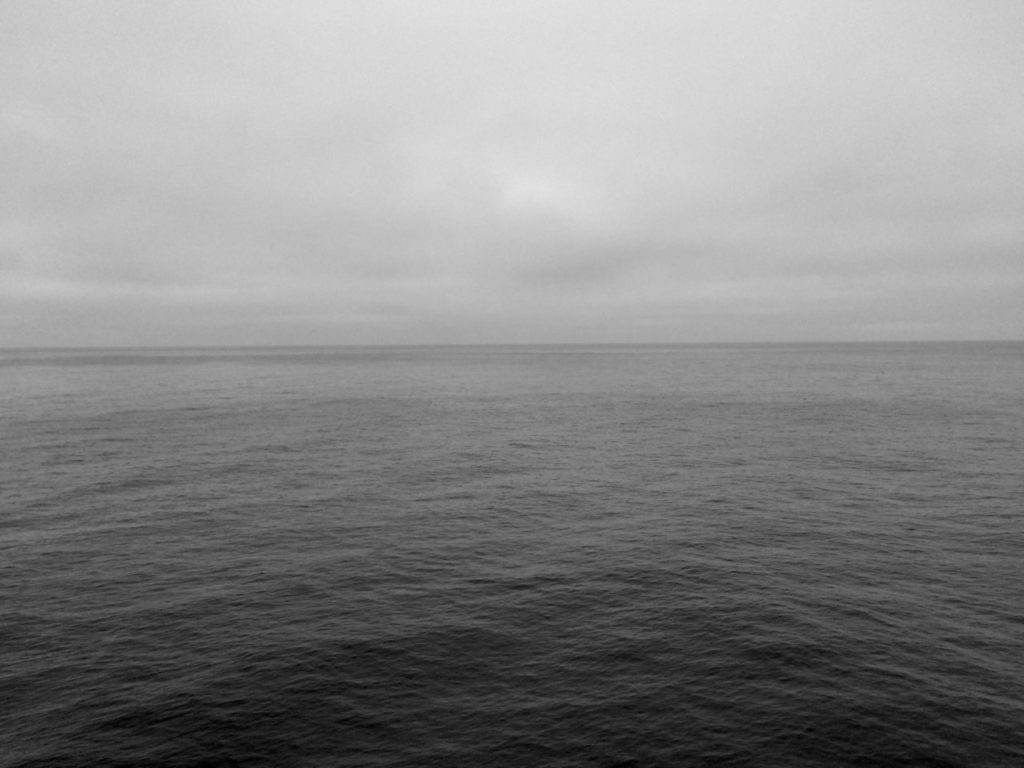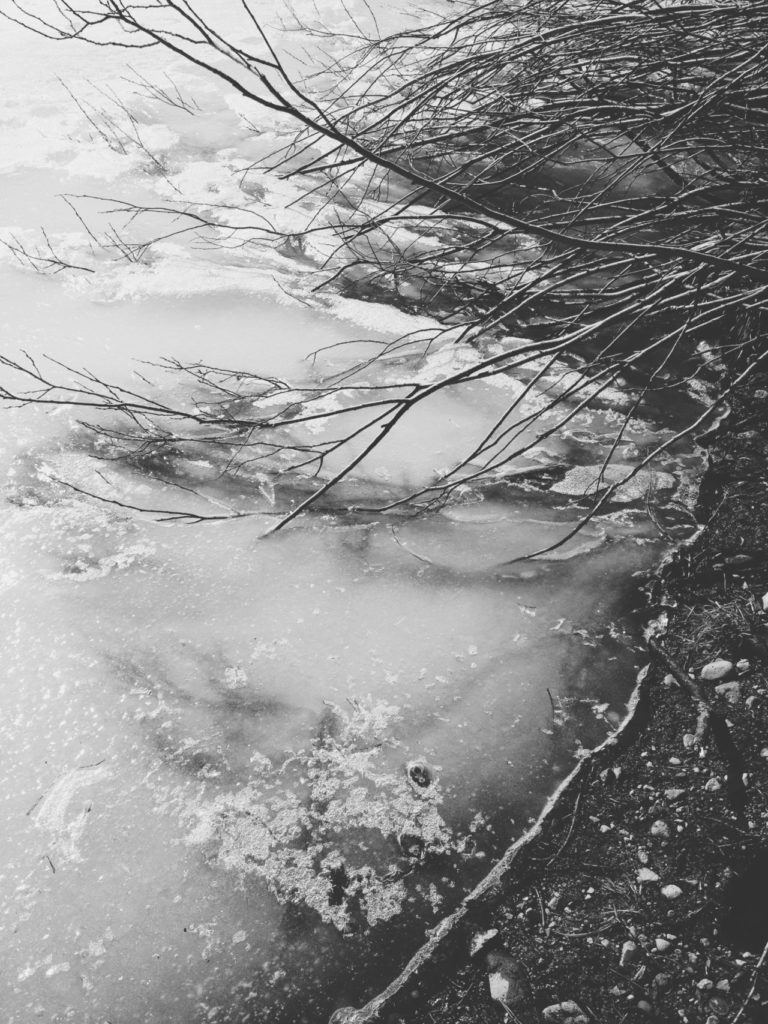by Tanya Holtland & Jennifer S. Cheng | Contributing Writers
dear j, dear t:
In January of 2021, Tanya and Jennifer began a slow, year-long correspondence on the quiet dark— its meanings, textures, definitions. A notion shared in conversation throughout the years, their responses amid the backdrop of the pandemic expanded to essays that were exchanged every few months, marking the precarity of each season. Through these, they gathered things that were carrying in the air that first winter of the pandemic, yet remain in continuity to weathers beyond.
Tanya Holtland (TH): In your essay “Dear Blank Space: A Literacy Narrative,” a work I have returned to over the years as though a salve during lost times, you wrote:
Dear Void,
And what is a constellation anyway, but a shape we temporarily trace in that vast pause, a lyric of geometry we speak into an otherwise dark and uncertain space?
. . .
What is unsaid holds just as much weight as what is said.
Where we might be weary of naming the dark, especially while in it, these lines and our conversations have always offered a comforting recognition of another’s orientation to that space. That where we are disoriented or unseeing, unable to land on the ground of a day, what we cannot articulate in service of a sense of gravity, is still a place as true as that which can be palmed, with structures available as a house that can be seen and moved through. Lately, I am held by Joanna Macy’s essay “Entering the Bardo” and her seeing that “We are in a space without a map. […] In Tibetan Buddhism, such a space or gap between known worlds is called a bardo. It is frightening. It is also a place of potential transformation.” How has the past year, the events of the world and interior events (movements of which are just as large) changed your relationship to the dark or its definitions? Do you have a sense that a particular kind of knowing is being granted through this dark? What emerges as namable for you in the textures of this newness?
Jennifer S. Cheng (JSC): I have always thought of dislocation as its own kind of location specifically with regard to immigrant home-building, but of course it also relates to our conversations about the quiet dark. Maybe we are all in some ways immigrants, trying to find the moorings amid the imperfect and mysterious layers of the world. Like many this past year, I have found myself at sea in various kinds of upheaval. The dark, for me, is always a place of brimming; even when it is anguishing and unbearable, there is a longing that feels so wide and expansive, it might just move mountains. I find it curious that in this time of distressing uncertainty, people immediately began to garden, as if compelled by some primal reflex. For me as well: a few days into shelter-in-place, in my agitation I took a miniature seed kit that had been left on the table for months and finally planted it, using my index finger to make a small hollow in the soil. Maybe it’s the hope enacted in burying a seed; maybe we just needed to feel ourselves inside the verb form—to nourish, to nurture, to care for. Something else, too: in Rebecca Mead’s essay on gardening “Nature and Nurture,” she describes the garden as an in-between space of being where one is both held and alone, where inner and outer worlds can coexist simultaneously, a “meeting place for our innermost, dream-infused selves and the real physical world.” There are facets of converging binaries in this in-between space that resonate, for me, with poetry, motherhood, spirituality, the quiet dark, other aspects of life.
Lately I have been relying heavily on the concept and practice of bewilderment. There has been a particular orbit of words as I’ve migrated from room to room in the house: tending, tenderness, attention, motherhood, garden, seasons, seeds, ritual, process, ongoing, nonlinear, unfinished, imperfect, trembling, shadow, unknown. This vocabulary has been its own ongoing collaborative garden cultivated with an artist-mother group I’ve been texting with during the pandemic. It’s been a kind of balm to gather with others around this nebulous question I am attempting to ask. In the fall, I had the opportunity to design and teach a graduate hybrid-genre craft course that I called Bewilderment in the Borderlands. I also lead a community workshop on what poetic concepts and approaches can do for us in times of precarity and vulnerability. Leave the door open for the unknown, the door into the dark, Rebecca Solnit writes. There is something of a precarious balance, a knife’s edge, in the way the dark can either hold or harm me.
It occurs to me now that the gravitational pull of my thinking and being this past year has been toward creation and decreation, and more precisely their blurring, their convergence. In the cycle of the seasons there is always a period of wintering, when the earth is fallow and seems empty, yet that very emptiness is what makes it possible for something to emerge. We grieve in the process of sowing; if the process itself enacts mourning, then I’m wondering what we can learn from its motions and rhythms. Or, as I’ve written to you in our personal correspondence, remembering years ago when we visited the Conservatory of Flowers and saw rows and rows (I typed rose just now) of variously hued chrysalises—that was the day I learned how a caterpillar dissolves completely inside the cocoon and becomes nothing, and yet everything it needs to emerge as a new creature is held in the structures of that dissolution.
In lieu of the nameable in these language-less months, I’ve been allowing ritual to take up articulation in my every day. Lately in my fits of grief, whenever I can listen closely to my body, I have felt compelled to write fragments onto tiny tissues of paper, to put them into a ceramic bowl the color of winter sky, sometimes placing various rocks on top of the sheaths, and then to pour water over it. I want to soften the places where the rough edges of rock touch another surface; I want to watch the tissues grow translucent and the stones become slowly absorbed in saturated greys, blues, paraffin. For me, a ritual is a conjuring of language in another form; it is poetry embodied. It recognizes the value of intuition and the unknown, while grounding the body in time and space. It searches out a form that is by nature process-oriented, ephemeral, weaving the concrete and fluid. It recognizes how radical attention and care transforms the meaning of what may otherwise be a commonplace gesture. It reminds us of our connection with elements of the world, our past and future selves, and each other.
So much of my curiosity and hunger for bewilderment is because of the miraculous way it creates a tension with the part of me that demands severe control, order, and proficiency in order to feel safe. This latter way of being has been ingrained since I was a child, and it can feel like a terrible hungry ghost that I am always fighting. I wonder what it would mean to stop fighting and instead invite the ghost in to sit and rest.
I’m afraid this answer to your question has become an essay. In the meantime, I am thinking of your beautiful chapbook Inner River, which I love so much, and how reading it made me feel like I was being carried into the depths of our darkest and saturated currents of being. What connections do you see between the dark that leaves us adrift and the perhaps gentler quiet dark of the everyday? When you are able, how do you find places to hold yourself while you are floundering? How does all this relate to and find resonance with (or not), your artistic practice?
TH: I believe there are distinct kinds of darkness that we can experience, and perhaps in this past year we have all become more attuned to their nuances. On an elemental level I picture deep water, depths within oceans we are only just beginning to understand. Of the rivers, a wide, quiet flow with matter attaching and decaying, rushing away and laying ground. Making the distinction between the dark that leaves us adrift and the perhaps gentler quiet dark of the everyday feels very much a moment-to-moment endeavor. One can float on the water, one can also be fully submerged and still be “floating.” I think we are collectively in a larger state of grief that goes beyond the ripple of events and into a more daily sorrow, where there need not be an event for it to occur anymore because the edges that contain our collective losses have spilled over. What feels tricky in writing to the dark is trying to contain that discourse at all, to find and go beyond the edges of your own unsteady reaching.
Before this past year, I thought about the dark in a kind of dichotomous space, of more favorable or less favorable distinctions. I remember the first time I was introduced to the term fertile void and the meanings that it swelled for me: the potent richness of the in-between, the necessary dark that precedes the coming of creation. As a term, it also does the work of ameliorating our culturally negative connotations of the dark. Of the less favorable distinctions, mine has always presented as depression. I say less favorable because this kind of dark has pulled me away from creating, connecting, and the present moment. It has had a way of keeping me in that state of decay where the promise of the other side—emergence, renewal, newness, insight, birth— I am unable to see on the horizon and end up operating from that lost place. I realize as I write this that there is so much we can never see of where something is going. I suppose that would be where trust, faith, hope, whatever that form is for you, takes over. But mostly, the dark—whether the kind that leaves me unable to function or simply wraps the day in a gauze—has grown to become a unique space in which I can hold nothing as something, and that nothing, at its best, is a gift. It is a precursor to creation if we are able to hold it as such. It, steady and patient as anything, blooms by our ability to steward it forward.
In the winter of 2020, my then partner and I dissolved our nearly seven-year relationship. She and I were able to do so with love, care, and generosity. It bears noting, though, that we moved out of our shared home and into separate spaces in a Seattle December. It was a week before the solstice, in the rainiest and darkest state, amid the darkest months of the pandemic. To say that I felt out to sea, at the bottom of the ocean, cocooned without awareness of anything hopeful, any notion of what would come on the other side, is oh so entirely accurate. It was a profound emptying. Now that it is summer and seasons have passed, that emptying, even as I am still moving through it, is something I hold dear. Which brings me to this: When we are able to distill the pain of those dark spaces, holding the discomfort and anxiety of what can’t yet be seen and of deep un-doing, how do we recognize the dark’s immateriality as a part of wholeness? How do we recognize it as a preceding space as much as we are accustomed to recognizing it as an ending space? What turns those little bodies into goo inside the cocoon that has everything it needs to emerge? It occurs to me that it is not done to the caterpillar. The caterpillar, ready for change, instinctually does it to itself.
Through the long winter there were rituals that kept and continue to keep me. Beyond journaling as a way to process a multitude of emotions, poetry and all other writing and creating seemed to have left me. That was the most stinging of losses, losing the ability to articulate what was happening. What emerged in its place was a kind of quiet movement. Several times in those months I went to the mountains. I reached for the Pacific Northwest’s rainforests and snow-covered lakes. My ritual was physical in a way I am still unraveling. What I gather is that where I could not totally lead myself my body took over. Where I felt at a loss for words and at a distinct loss for meaning, my body knew better and knew to go outside. The last mountain I met shed its snowy heft in April sun and the only sounds were the cracks of its ice shelves readying to fall. There are several poems in there. One is a relationship with a planet that we are all trying or aching to rebuild.
“Being willing to attend to something is transformative, and fear is no exception,” says Hala Alyan, and I cannot help but see this as a part of our conversation. Despite what is difficult in writing to the quiet dark, I realize how much for better and worse I also feel oddly at home in my orientation to it. For us to be engaging with its meanings (for so many years now), its offerings, its role as source, feels important to name. I believe that we all have the potential to become stewards of the dark, learning a tending and a tenderness for its place within us and in others. If we can center in on the dark, and we can name its attributes fully enough to befriend it, how would that reshape our relationship to the everydayness of it? Where then does anxiety or depression fit for you? What does it look like when you are able to glimpse yourself in the eye of it? What helps you find your way back?
JSC: When I write to the dark, I feel it as an immense landscape—sometimes like the ocean with its immersive depths; but other times, it is the vast stillness of the Arctic terrain in Werner Herzog’s Encounters with the End of the World, where one’s smallest sounds seem to simultaneously echo and muffle, and whose visual and aural sensibilities I revisit when I am inside a certain kind of ache. Still other times, it is the dense, murky piney forest in the middle of nowhere that I pass while driving across state lines at night, beckoning with such terrible loneliness, it almost makes me cry out.
Very few people are willing to talk about the dark in its myriad complexities, and I recognize there is the risk of romanticizing something harmful, so I’m glad you clarified this boundary—there is a dark that pulls me away from the world into an unbearable, unbreathable place, and there is a dark that feels like my morning walks in the fog of the coastal headlands, where the world, in being lightly obscured, is somehow more deeply felt. On such walks, the ocean edge is powerful because it is where the feeling of one’s smallness can swell into its own largeness, but this space of the sublime depends on our not becoming swallowed and utterly lost to it. I am remembering stories of fishermen who go out too far into the expanse on windless days and, unable to orient themselves, fall into a kind of fatal stupor. Or animals that navigate by celestial light—so long as there is a reference point, even when the sky is overcast or stormy, they stay tethered. How to keep our bodies turned toward an anchor even in the thick of dark?
The first time I decided for myself there was a God or some form of divine entity was when I was twelve years old, standing at the edge of the Grand Canyon, a literal abyss. I wonder if what I am reaching for right now is perhaps that the quiet dark, in being its own vast landscape, carries an elusive potential to bring together terror and beauty, smallness and largeness, in a way approaching the numinous. Poetry touches this edge, too, which is why, as Shane McCrae says, “with each interaction with poetry, one is both further wounded and further constituted.”
This summer, as the pandemic resurged and persisted against our hopes, I felt the units of time like distances being crossed. Collective and individual griefs perforated the days, minor and substantial ones, and eventually I found myself underneath something heavy and viscous that was pressing down on me until even breathing was a terrible, slow-bodied effort. I’ve experienced cycles of depression ever since I can remember being alive, but each time I still seem to find myself suddenly in the midst of it, sunken, flailing, having forgotten in the interlude something of its experiential concreteness. It was painful, of course, and debilitating; but it makes a world of difference when a distant part of me is able to tell the rest of me to wait, just wait, and in the meantime to be as gentle and slow as needed. I did wait, and now I am gradually resurfacing, considering how grief can be a way of listening…grief as a membrane of attention and tending, echoing that wonderful quote by Hala Alyan.
Here I might revisit your phrase, steward of the dark, which I love in the same way as Rosmarie Waldrop’s gardening the gap or Rilke’s guardians of solitude. If I can meet the floundering, flailing dark in the same way I might an intimate ancestor, that is, with respect, tenderness, and care—if I can recognize the strange ways in which its inheritance relates to that of the poetic dark, then perhaps I can locate tiny threads, however tenuous, of the best kinds of bewilderment when I am being unraveled by the worst kinds. This doesn’t always mean I weather the dark gracefully; but perhaps while all of my monsters are screaming at me, there is, somewhere, the low hum of something else beckoning.
Things fall apart—it’s a law of the universe—and maybe this has always been my interest in debris. In the same way that a bird will gather from its environment and make a little home for itself, how do we build a nest, a net, in conversation with the detritus of the world around us? What have you been able to build in the shadow of your dissolved relationship? What sounds have you been listening to in that trying place?
Three years ago, a friend of mine Carina del Valle Schorske posted on Twitter a translation of Édouard Glissant that I have been thinking about ever since: “Because the world trembles in every which way, we understand the world better when we tremble with it.”
At the beginning of this letter I meant to share something of my recent experiments in asemic writing and inconsequential mark-making—ways of finding language inside a mute abyss—but instead I’m just here, trembling. I’m thinking about how postpartum and early motherhood, which, for me, lead into the pandemic, was the most turbulent and devastating period of my life; and yet in its undoing of my entire being, I discovered a kind of rawness, fragility, and vulnerability that made the universe somehow clearer, brighter, the way water saturates a river rock. This is the strange—and risky—contradiction: one would never choose trauma, and yet some things are only made possible through it. It’s the through that I think we are attempting to name in our tentative addresses to the dark. Naming can be a way of seeing, and maybe we are trying to see our way through.
TH: There is so much richness here that I want to respond to. Your description of the quiet dark as a potential to bring together terror and beauty, smallness and largeness, in a way approaching the numinous grabs me completely. My sense of how we come upon naming a thing at all feels a sum of our relationship to it. Naming is an act of long listening that encompasses a depth and breadth of experience. When I think of how a parent chooses a name for a baby or the path that emerged in changing my own name years ago—a future listening informed by the present and the past. A beautiful and elusive attempt to wrap a literative energy around a thing with the hope that you may learn from it, hold its water in the palm of your hand.
When I hold the aspects of contradiction you so perfectly lay out: one would never choose trauma, and yet some things are only made possible through it, it casts me back to my earliest experiences. My entry into understanding the dark began with its first, early accumulations. Mostly, it surfaced when I was ten years old in the form of self-harm. That is a hard sentence to write. Difficult because I can still feel that vulnerable child inside of me even if I now possess a vantage to understand the situations that pressed me to that edge. What I couldn’t express verbally and had no words to name of the trauma moving through me emerged as a mirror through which I and adults around me at the time could see. For me there is a question answered in seeing where depression gathers darkness to an edge that breaks through the surface and leaves the realm of the interior. It was told to me once in a crucial moment (thank you, S.S.) and I still believe this, that the desire to end one’s life is a deep desire for transformation. In the core of that experience is the shadow of a being that knows something needs to change, needs to be transmuted, and wants to change it. That desire, however troubling and short-sighted, contains wisdom.
When I was sixteen my father died unexpectedly, and grief compounded itself in a way that I think fundamentally changed the way I saw the world. To track that aspect of the dark that moves along a continuum of becoming more known and understood, if we are able to stay present with it through the years, is the through line I trace toward hope. That grief or a lingering dark is perhaps in and of itself a desire for naming: It desires to be named, and that act begets recognition, understanding, and healing. A lyric from Emily Haines circles this idea: “Hell is asking to be loved.” Something of the dark that has made a home in us or the dark that arrives to us in all the ways that it does, is asking to be loved.
Your beautiful grief as a way of listening ties into another angle of the quiet dark that feels important: Joanna Macy’s grief as a doorway, one that opens us “into a vaster realization of life and of our identity, our interexistence with all life.” This idea again brings me back to hope, a trust that the dark bears its own kind of wholeness and concurrent to our experience of it exists an invitation, a doorway to step through by way of a change in perception, by way of listening. This is incredibly difficult for so many of us who grapple with depression. It is a long road of learning how and where to find elevation, to engage with a shoreline that has the potential to take us out to sea. My hunch is that it is also those of us who know the dark most intimately who are being given these repeat chances to accept its truest gift. Inherent in the pain of darkness is its potential to open us up dramatically, to ourselves and to others.
In the shadows of what is dissolved in this year and continues to dissolve, I’m finding new ways of echolocation. These slow letters of ours have lent a space for the quietest of the quiet to emerge, to be carried through a fertile moment in time. I’m on the cusp of moving to a new coast (perhaps figuratively as much as literally), so there is still so much that feels unknown and unseen, and our collective orientations feel equally on the edge of emerging. I have been steeped in a lot of grief this year as so many people have. There are pockets of light but overall, I am continually reminded that grief is cyclical, coming up as though indifferent to seasons, nonlinear in its persistence for healing and its want for our expansion. At times it has been excruciating, pushing me to a place where surrender and letting grief do its work as a teacher is the only thing left. When I think about what I wrote to you in the summer about the darkness as a preceding space, I want to add for anyone reading this how difficult it can be to find that anchor in the storm. How the moments of light that you are able to find as you mourn the unique ways that grief has met you, that those are exceptionally hard won, and to be kind to yourself along the way. Softening into grief instead of fighting it has changed me. There is something powerful in approaching that which feels like it will undo you, with absolute tenderness. In this way I am learning to stay close to what hurts the most. With the same vigor I am learning to stay close to joy, to the unknown, and with everything in me, love.
All images were captured by Tanya & Jennifer, with the intention that they reflected this conversation and the landscapes from which they wrote.
—
Jennifer S. Cheng’s work includes poetry, lyric essay, and image-text forms exploring immigrant home-building, shadow poetics, and the feminine monstrous. She is the author of MOON: Letters, Maps, Poems (Tarpaulin Sky), named a Publishers Weekly “Best Book of 2018,” and House A (Omnidawn), selected by Claudia Rankine for the Omnidawn Poetry Book Prize. She has received awards and fellowships from Brown University, the University of Iowa, San Francisco State University, the National Endowment for the Arts, the U.S. Fulbright program, Kundiman, Bread Loaf, MacDowell, and the Academy of American Poets. Having grown up in Texas and Hong Kong, she lives in San Francisco within walking distance of the ocean. www.jenniferscheng.com
Tanya Holtland is author of the eco-poetry collection Requisite (Platypus Press), a finalist for the Broken River Prize, and the chapbook Inner River (Drop Leaf Press). Her nonfiction and lyric essays appear in The Offing, The Rupture, EcoTheo Review, and elsewhere. She is a graduate of San Francisco State University’s English and Creative Writing MA program. A Los Angeles native, she currently lives, works, and writes in Seattle. tanyaholtland.com

